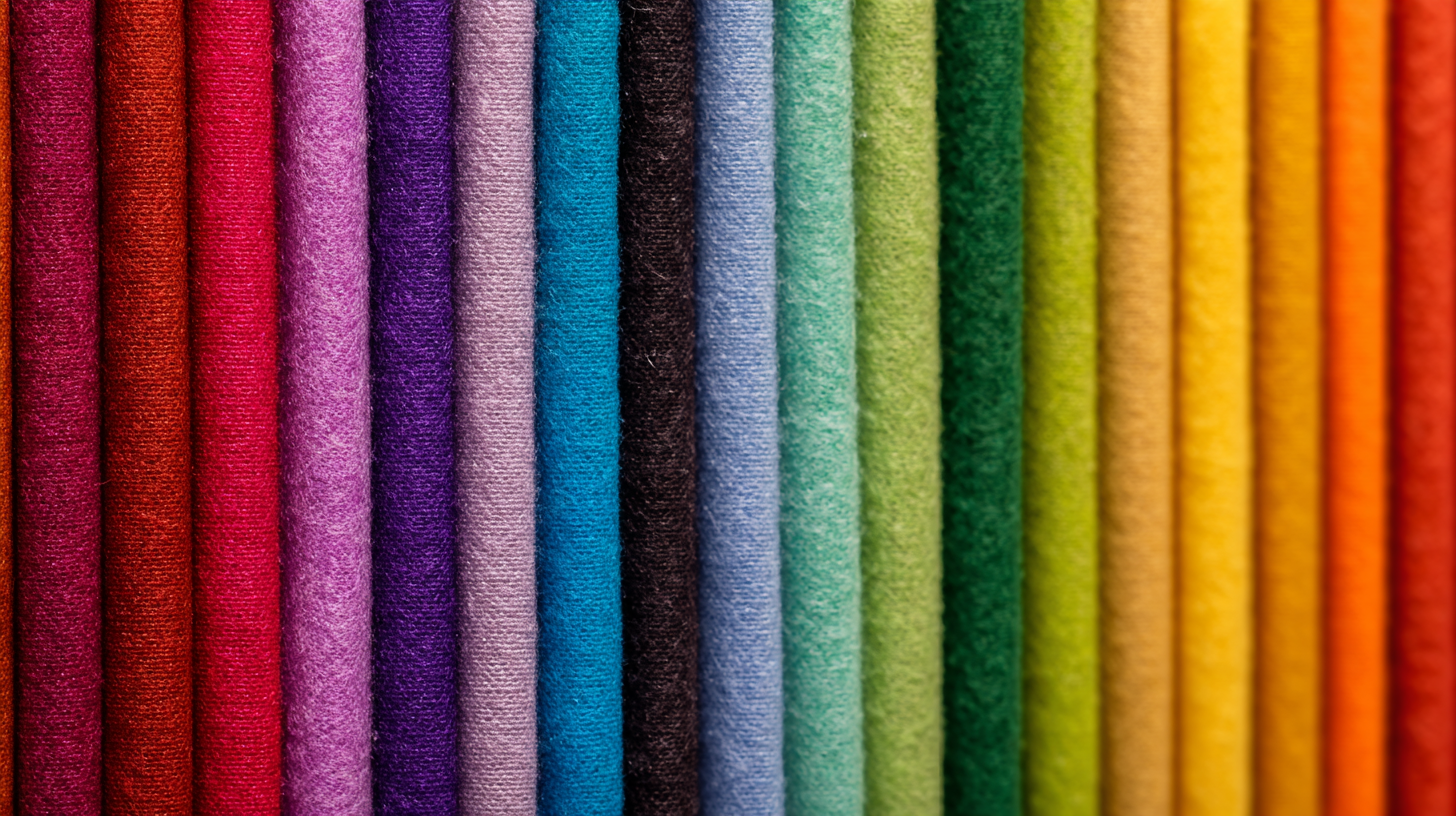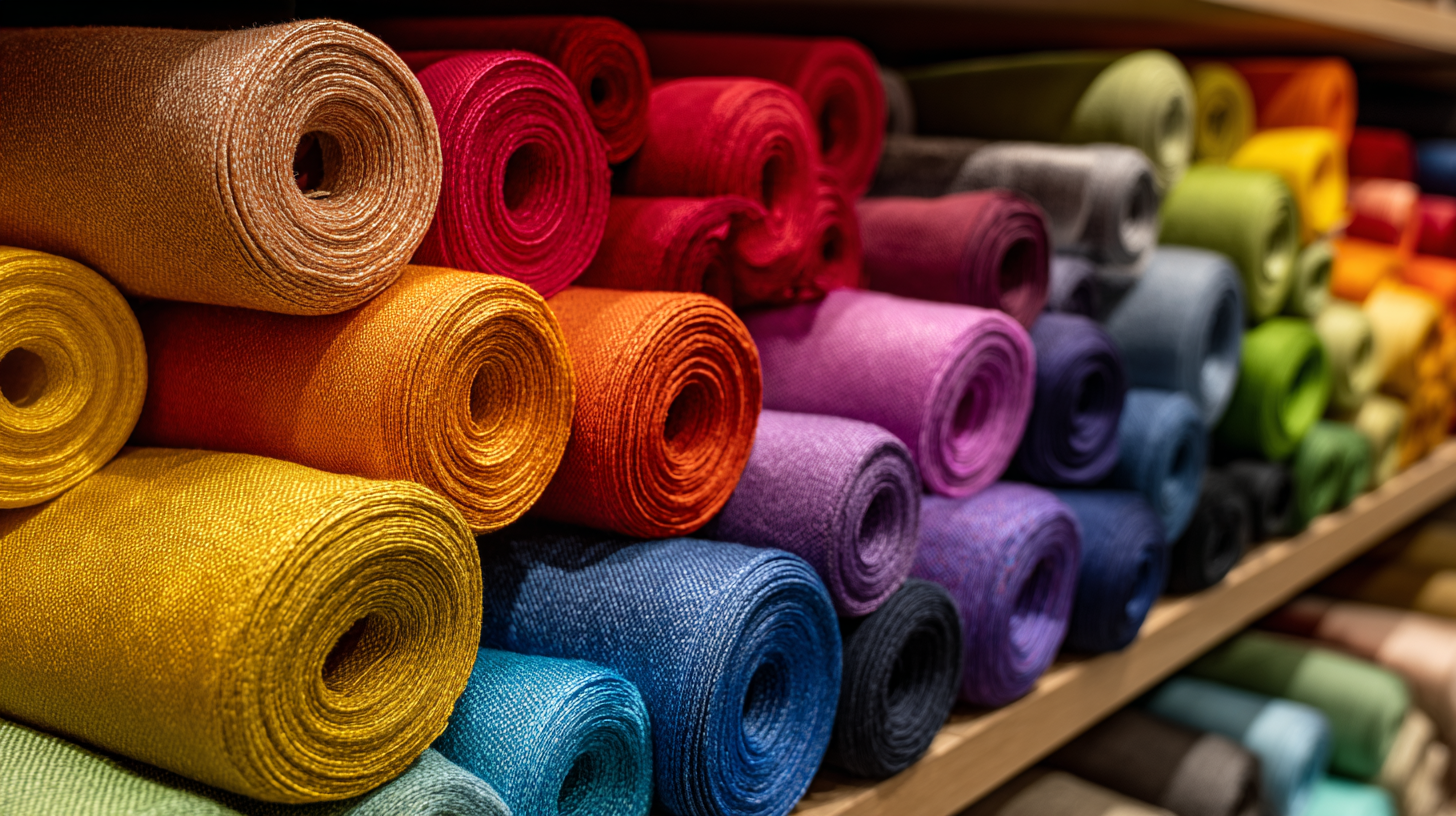In recent years, the sustainable fashion industry has increasingly drawn attention to the materials used in garment production, with polyester fabric emerging as a significant focal point. According to the Global Sustainability Textiles Market report, the consumption of recycled polyester is expected to grow at a compound annual growth rate of 10% from 2021 to 2026, reflecting the shift towards more environmentally responsible choices. As much as 60% of the global textile production is based on synthetic fibers, predominantly polyester, emphasizing the need for brands and consumers alike to understand the various types of polyester fabric available. With advancements such as eco-friendly production processes and innovations in recycled polyester, it is crucial to make informed decisions that align with sustainable fashion principles. By knowing how to differentiate between various polyester options, stakeholders can contribute to a more sustainable future while meeting contemporary fashion needs.

When selecting polyester fabric for sustainable fashion, it's essential to identify key features that signify its eco-friendliness. Look for materials made from recycled polyester, commonly labeled as rPET. This fabric is derived from post-consumer plastic waste, significantly reducing environmental impact compared to virgin polyester. Additionally, check for certifications such as the Global Recycled Standard (GRS) or OEKO-TEX, which assure that the fabric meets sustainability criteria.
Tips: When shopping for sustainable polyester, consider the fabric's durability and versatility. High-quality polyester can withstand repeated washing and wear, which extends the lifespan of your garments. Furthermore, seek out suppliers who practice ethical manufacturing processes, ensuring fair labor conditions and minimizing waste throughout production. Lastly, opt for brands that provide transparency regarding their supply chain, allowing you to make informed choices about the fabrics you support.
This chart compares different types of polyester fabrics based on their sustainability features, including recycled content, biodegradability, and energy consumption in production.
When choosing polyester fabric for sustainable fashion, it’s essential to assess the certifications and environmental standards associated with fabric production. A critical aspect is understanding various sustainable building assessment systems that guide responsible manufacturing practices. These assessments, such as the Green Building Rating Systems, provide frameworks that can be adapted to evaluate the sustainability of textile production. Brands that prioritize these assessments often adhere to rigorous standards, ensuring their materials are ethically sourced and produced with minimal environmental impact.
Additionally, compliance with evolving chemical regulations is crucial for fabric manufacturers. Ensuring that polyester fabrics meet safety and environmental standards not only benefits the ecosystem but also enhances consumer trust. It’s beneficial to select materials that have been certified by recognized eco-labels, ensuring they contribute positively to sustainable practices. By focusing on fabrics with established certifications, designers can make informed choices that align with their commitment to sustainable fashion, ultimately supporting a cleaner and greener industry.
| Fabric Type | Recycled Content (%) | Certifications | Water Consumption (L/kg) | Carbon Footprint (kg CO2e/kg) |
|---|---|---|---|---|
| Polyester - Recycled | 100% | GRS, OEKO-TEX | 15 | 2.5 |
| Polyester - Virgin | 0% | OEKO-TEX | 60 | 5.5 |
| Polyester - Biodegradable | 50% | ASTM D5511 | 30 | 3.0 |
| Polyester - Eco-friendly | 70% | Repreve, GRS | 20 | 2.2 |
When selecting the best polyester fabric for sustainable fashion, it's crucial to understand the different types available. Recycled polyester, often made from post-consumer plastic bottles, is a popular choice among environmentally conscious designers. It not only reduces waste but also conserves resources compared to virgin polyester. This material retains the durability and versatility characteristic of traditional polyester, making it suitable for a wide range of applications, from activewear to high-fashion garments.

Another type to consider is bio-based polyester, produced from renewable resources like corn or sugarcane. This innovative fabric offers a sustainable alternative to conventional polyester by decreasing reliance on fossil fuels. Additionally, it is biodegradable under specific conditions, contributing positively to environmental sustainability.
When choosing polyester for your fashion projects, evaluating these options can help align your fabric choices with eco-friendly principles, promoting a more sustainable fashion industry.
When selecting polyester fabric for sustainable fashion, comfort and performance are paramount. The right polyester can offer excellent breathability, moisture-wicking properties, and stretch, ensuring wearers feel comfortable throughout the day.
Fabrics with a soft finish and good drape not only enhance the overall look but also improve wearability. Look for recycled polyester, which retains the desirable qualities of virgin polyester while reducing environmental impact. This choice ensures that your wardrobe is both eco-friendly and pleasurable to wear.
Performance features should not be overlooked, especially for activewear and outdoor clothing. High-quality polyester fabrics can be engineered to provide UV protection, incorporate antimicrobial properties, and withstand harsh weather conditions. When assessing the performance of polyester fabrics, consider the composition and weaving techniques, as these directly influence durability and functionality. By prioritizing comfort and performance in sustainable polyester choices, you can create fashionable outfits that respect both your body and the planet.
When it comes to sourcing ethical suppliers for eco-friendly polyester options, transparency is key. Look for manufacturers who openly share their sourcing practices and the environmental impact of their materials. Many suppliers now provide certifications such as Global Recycled Standard (GRS) or Oeko-Tex, which indicate that their products meet specific sustainability criteria. This not only ensures that the polyester is recycled or produced in an environmentally responsible way, but also helps in tracing the supply chain for better responsibility.
Additionally, consider partnering with suppliers who prioritize fair labor practices and community engagement. Ethical producers often invest in their workers' well-being, offering fair wages and safe working conditions. Engaging with suppliers that uphold social responsibility as much as environmental responsibility will help you create a truly sustainable fashion line. It’s also beneficial to develop long-term relationships with these suppliers, as this can foster innovation and collaboration in creating eco-friendly designs while reinforcing your commitment to sustainability in fashion.







